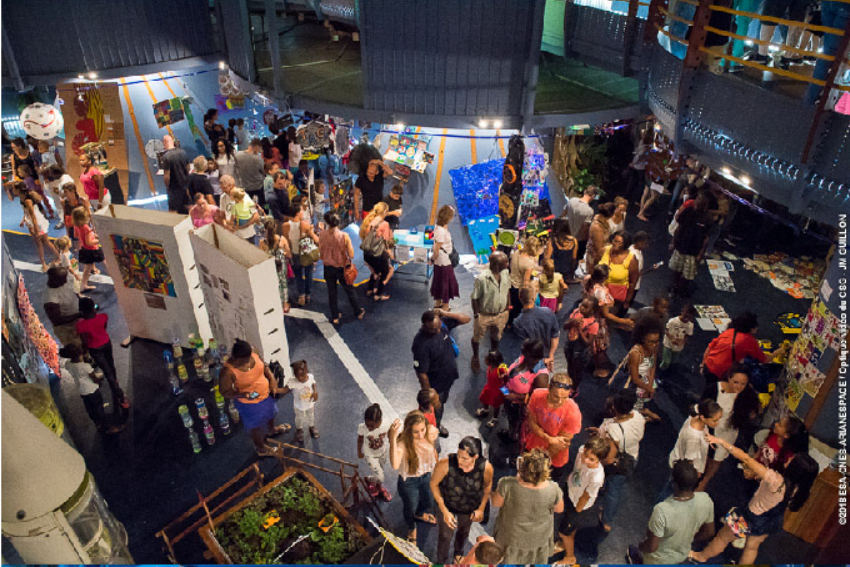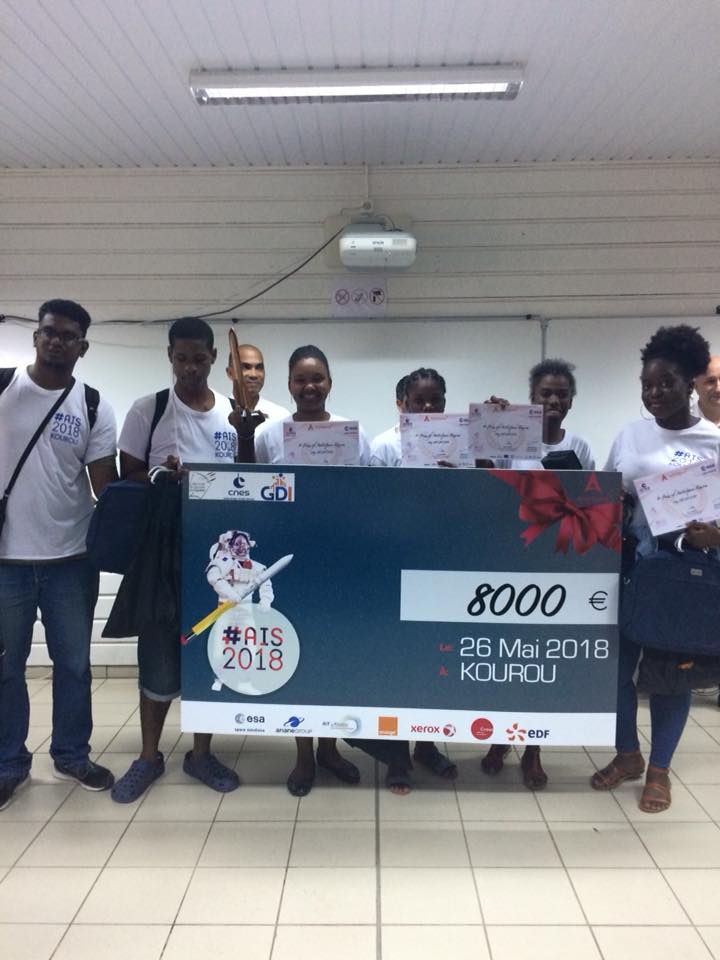The European Spaceport in French Guiana is more than just a launch base. Space is a very diverse community. My reply to the question of “Who works in Space?” is “Everyone”. In other words, in this industry, there is space for all kinds of people and all kinds of professions.
We take every opportunity to interact with the local community, showing them that there is more to launching rockets than most people think. This weekend was particularly busy from that point of view.
On Friday May 25, the Kourou Space Museum inaugurated a temporary exhibition on the theme “Quel art est-il?”, meaning “What art is there?”. 130 school classes from Kourou, Macouria, Montsinery, Sinnamary, Cayenne and Remire-Montjoly (with students of all ages) created works of art on this theme. Many of them were really neat. Kids made full use of their imagination, combining their ideas of space and time, using material at their disposal (everything from wheelhubs (!) to coffee capsules, plastic bottles, and a host of other everyday items).

To me, their efforts are very symbolic of the space industry, because this is essentially what we do. We take bright ideas and turn them into reality using available means, inventing new ones or dreaming up innovative uses of known technologies. The exhibition is open until June 26.
Saturday, May 26, I participated in another interesting event “ActInSpace”: a 24 hour challenge targeting young people, organised by CNES and ESA. Its aim was to develop entrepreneurial spirit and demonstrate that the Space industry is also about creating employment and economic development — and very importantly, identify future candidates to participate in business incubator schemes. More information can be found at https://actinspace.org/
The event took place simultaneously in several European cities and a final round will be organised in Toulouse at the end of June 2018. Here in French Guiana, the event was organised/hosted by IUT, and the eager entrants kicked off their activities at 11 o’clock on Friday. The five-member jury started their work on Saturday at noon, and we had a packed day.
Thirteen teams were each given 5 minutes to present their project. This was followed by 5 min of Q&A. Once the 13 teams had given their pitches, we retreated to another room and did the rating to determine the top three.
This was not an easy task. Many ideas were interesting. All the teams had put their heart into the work. Many had worked through the night. Selecting the top three was both an interesting and enjoyable challenge.
What struck me most of all during the prize giving ceremony was that all the students cheered each team that got a prize with the same vigour; the very essence of fair play and teamwork that is so important in the space industry.
Charlotte Beskow
Head of the ESA Space Transportation Office in Kourou


Discussion: no comments